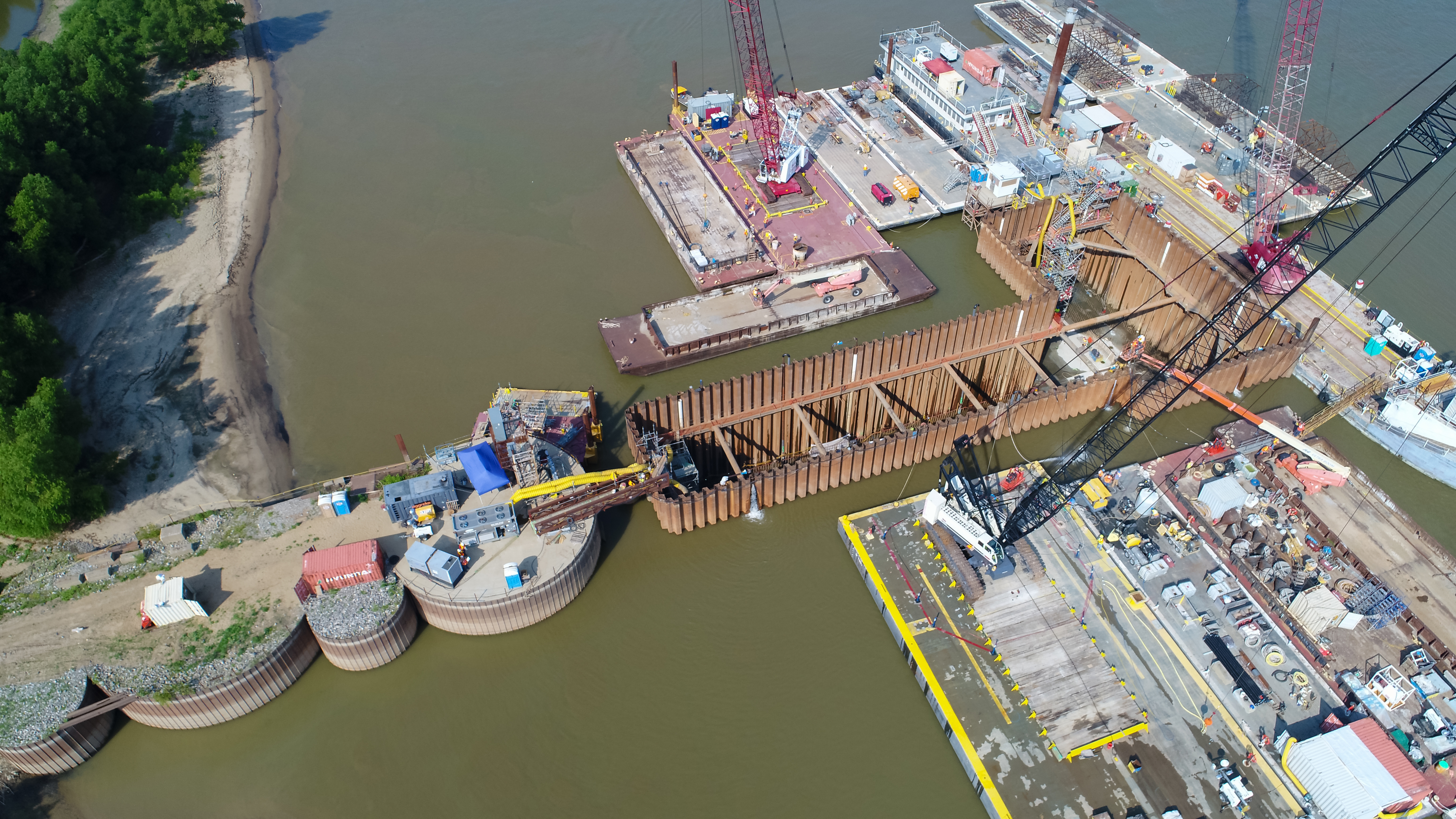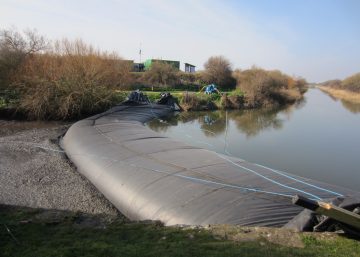A dam is a structure which is used to impound water, to hold water back. When people think of dams, they usually think of the great big concrete structures like the Hoover Dam, which are built to store water or generate power, or the earth bunds which are used to control and impound big rivers, preventing them spilling out into flood plains. Quite often people think of beaver dams, temporary log jams flooding small streams to create a wetland.
Temporary dams are often built for the same reasons as permanent dams, i.e. abstraction, flood protection, flow control but the term is generally used to refer to an interim structure used to enable construction. Where you want to repair a structure, such as riverbank wall you want it to be dry for the duration of your works, to allow safe access and dry working, you need a temporary dam. That dam can be formed of pretty much anything, so long as it’s safe and watertight. Temporary dams can be formed of earth, clay or rock and in such form are typically referred to as temporary bunds. They can be formed of bagged material, ton bags or sandbags or gabion baskets which allow for modular construction and controls installation and removal or they can be proprietary surface mounted systems; air or water filled tubes, braced frame structures or container systems. These are usually surface mounted systems, relying on mass weight, friction or the shear strength of the ground.
Cofferdams can be temporary dams but are often defined as separate because of their use in deep excavation works. A cofferdam will typically be used to withhold both water and soil pressure and can be found in use to for the foundation of bridges, where it is necessary to remove the water and excavate the bed. The most common form of cofferdam is sheet piling, interlocking steel sheets driven into the ground at a depth greater than that of the excavation and braced with walings. Cofferdams can also be formed form large bore cylinders, filled with material such as the Brighton Marina defences.

